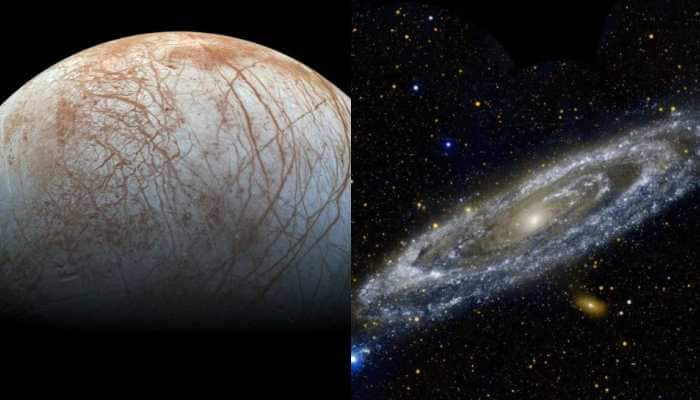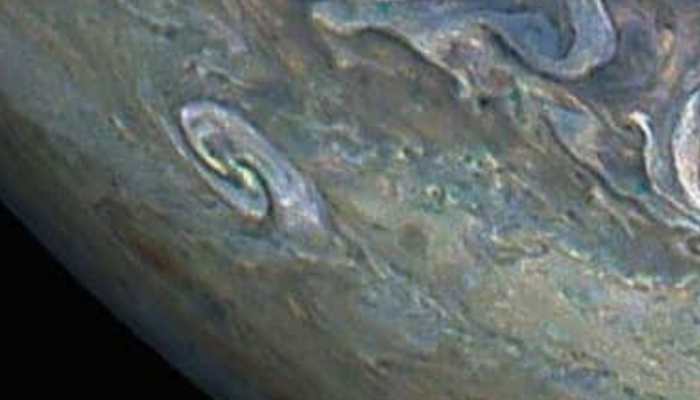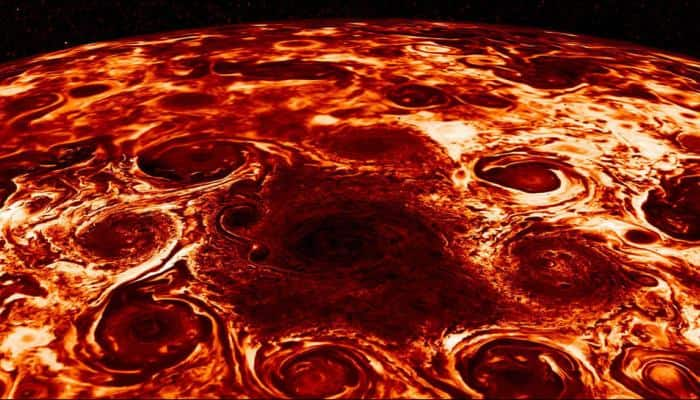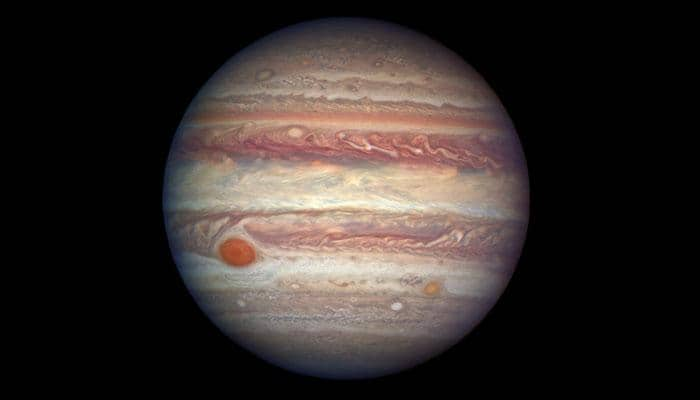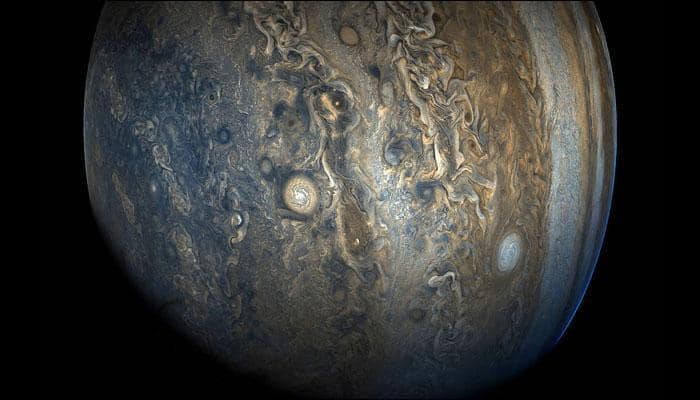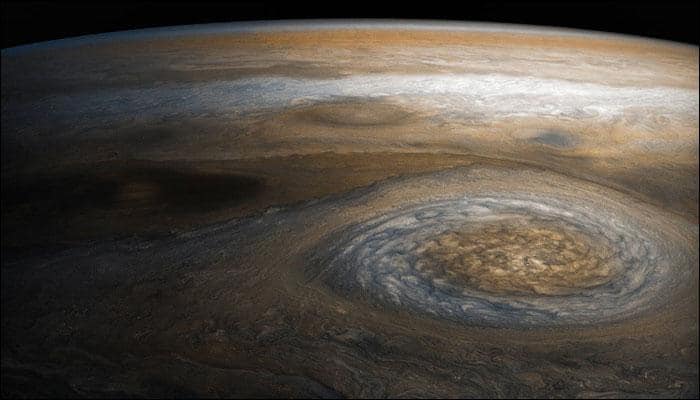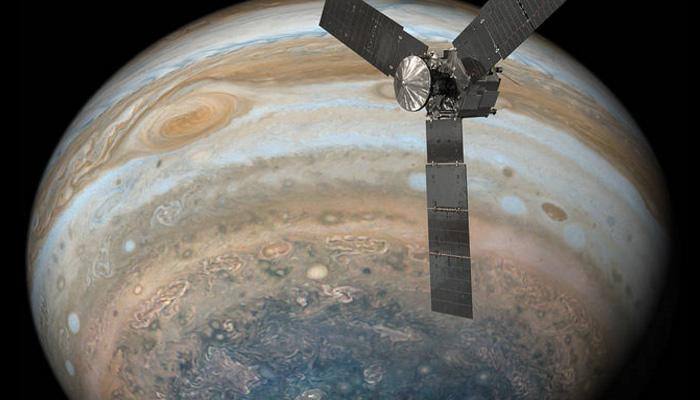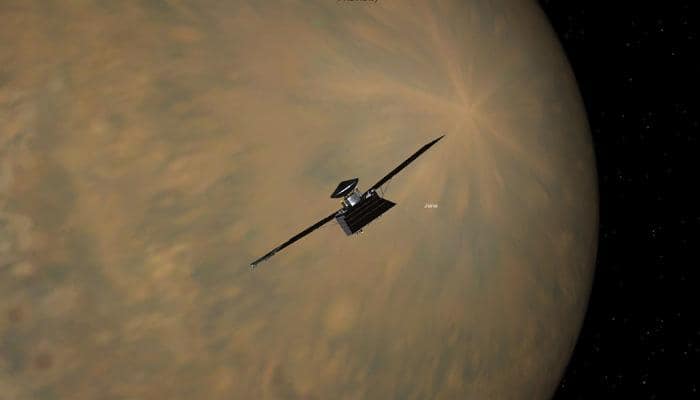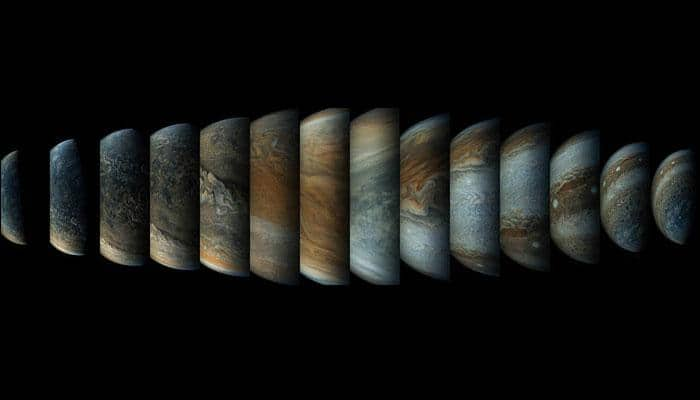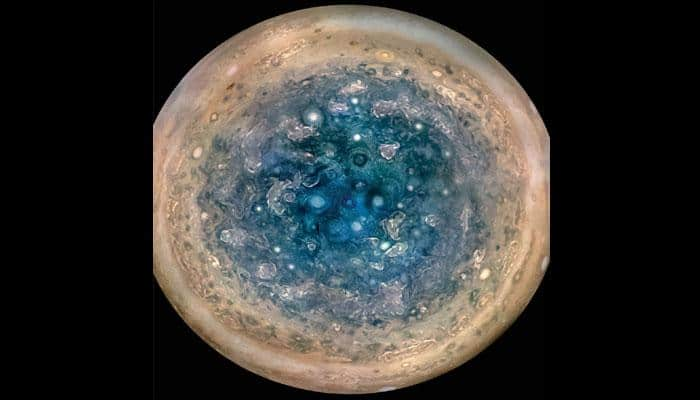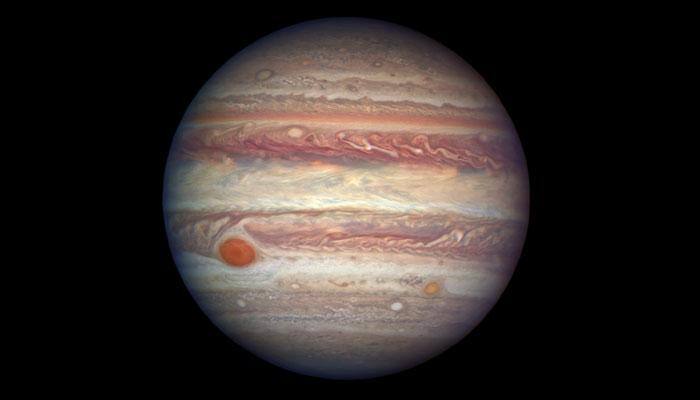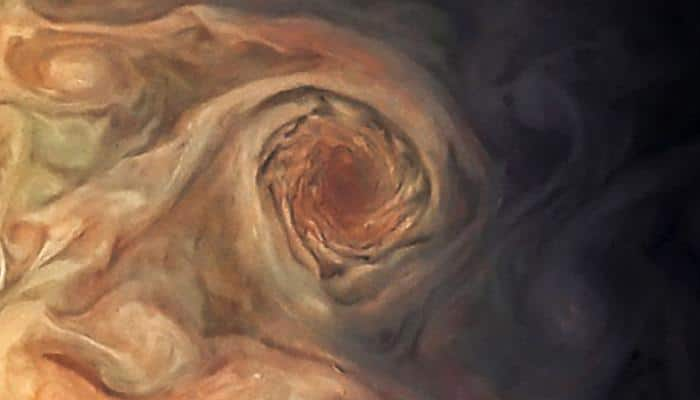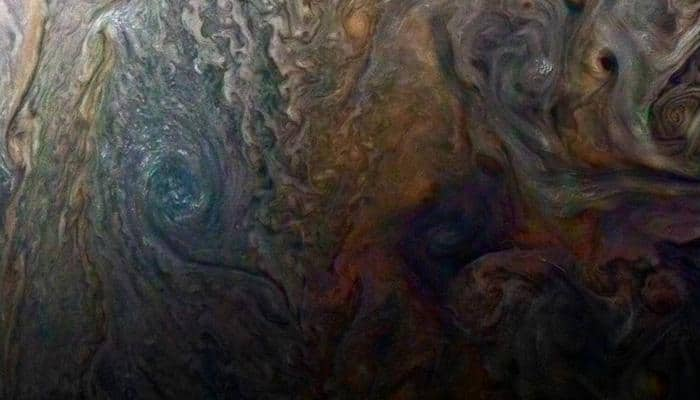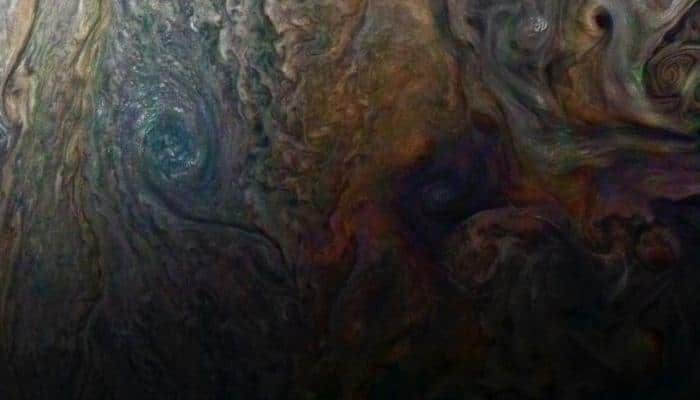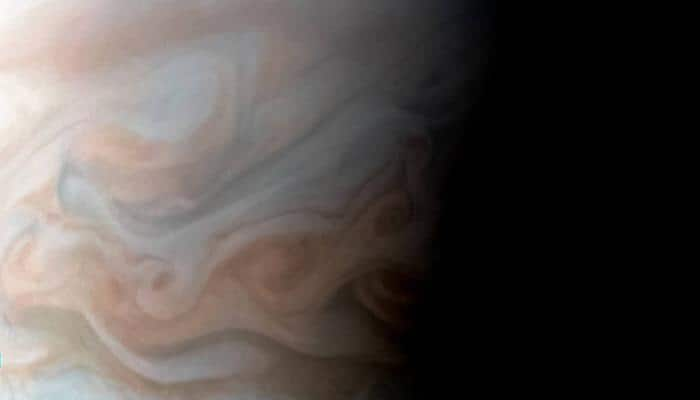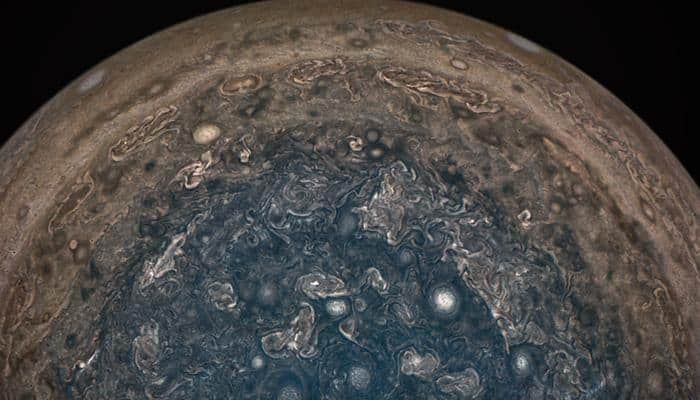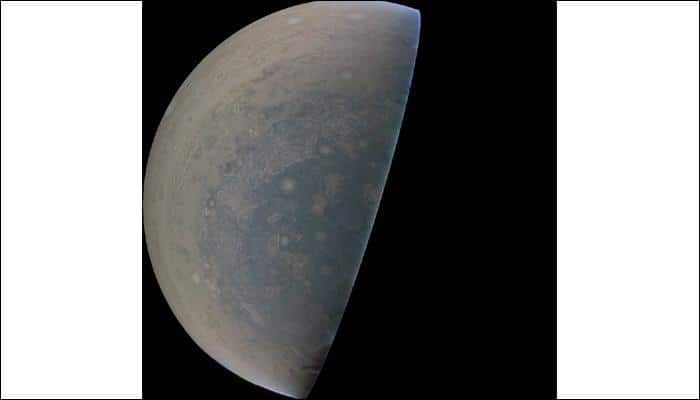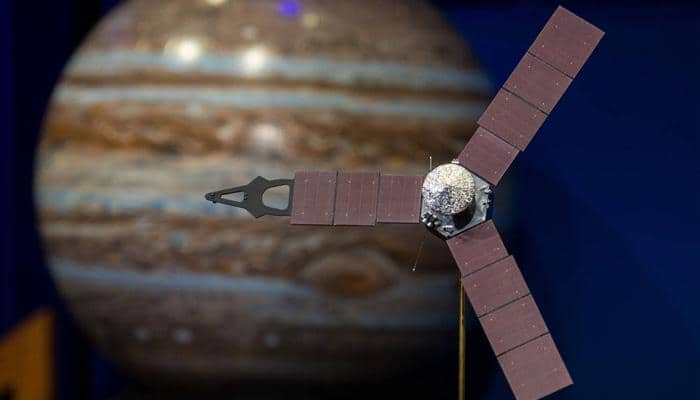Jupiter’s Moon to the Andromeda Galaxy: 5 Breathtaking Photos From Space By NASA
These remarkable images, taken by the US space agency National Aeronautics and Space Administration (NASA), showcase the universe's marvelous visuals. NASA's James Webb Telescope, Hubble Space Telescope, and Chandra Space Observatory have captured these breathtaking views. Revealing the extraterrestrial world in unprecedented detail, NASA regularly releases images never seen before. These cosmic wonders include celestial bodies, planets, nebulae, moons, star clusters, interacting. Here are five stunning photographs captured by NASA, offering a glimpse into the grandeur and complexity of the extraterrestrial world.
Aug 08, 2024, 14:05 PM ISTJuno Mission's Glimpse into a Swirling Giant
Let’s explores the captured images of ‘Chaotic Clouds and Cyclonic Storms’ of Jupiter which was clicked by Juno spacecraft on 12 May.
Jul 31, 2024, 15:48 PM ISTFlying across Jupiter's clouds, NASA's Juno gets close to a 'rosy' storm – See pic
During the course of its 11th science flyby of the solar system's giant planet, Juno captured a massive close-up view of a storm with bright cloud tops.
Mar 19, 2018, 15:55 PM ISTJuno revelation: Jupiter's mysterious jet-streams are 'unearthly'
The findings, based on based on data collected by the Juno mission, will improve understanding of Jupiter's interior structure, core mass and, eventually, its origin.
Mar 08, 2018, 13:25 PM ISTJupiter's iconic 'Great Red Spot' is shrinking; may fade away within a decade: Scientist
The Great Red Spot is a giant oval of crimson-colored clouds in Jupiter's southern hemisphere that race counterclockwise around the oval's perimeter with wind speeds greater than any storm on Earth.
Feb 20, 2018, 13:37 PM ISTNASA's Juno beams back magnificent image of Jupiter's southern hemisphere
At the time the image was taken, the spacecraft was 33,115 kilometres from the tops of the clouds of the planet at a latitude of minus 52.96 degrees.
Nov 10, 2017, 13:35 PM ISTWhat's brewing Jupiter? NASA's Juno captures vigorous storm in gas giant's 'Little Red Spot' - See pic
This storm is a long-lived anticyclonic oval named North Temperate Little Red Spot 1 (NN-LRS-1); it has been tracked at least since 1993, and may be older still.
Aug 04, 2017, 09:13 AM ISTJuno's flyby over Jupiter's Great Red Spot success – NASA probe dives deep into gas giant's iconic storm
As per NASA, Juno reached perijove - the point at which an orbit comes closest to Jupiter's center - on July 10 at 6:55 p.m. PDT (9:55 p.m. EDT).
Jul 12, 2017, 09:21 AM ISTJuno's close up flyby of Great Red Spot: NASA's probe peers deep into Jupiter's deep red heart
As per NASA, Juno's closest approach with the gas giant's iconic storm occured on Monday, July 10, at 6:55 p.m. PDT (9:55 p.m. EDT), peering into its deep deep red heart and passing about 2,200 miles above the planet's cloud tops.
Jul 11, 2017, 12:53 PM ISTIn its closest approaches to Jupiter, here's a stunning sequence of Juno's passing shots! - See pic
Using the numerous images captured by JunoCam, experts have created enhanced colour-images showing a sequenced glimpse of how how quickly the viewing geometry changes for Juno as it swoops by Jupiter.
May 26, 2017, 12:28 PM ISTViewing Jupiter in a new light: NASA's Juno mission delivers first science results!
From 2011 to 2016 – from the year Juno was launched, till the time it entered Jupiter's orbit – the findings from the first data-collection pass, which flew within about 2,600 miles (4,200 kilometers) of Jupiter's swirling cloud tops on August 27, are being published this week in two papers in the journal Science, as well as 44 papers in Geophysical Research Letters.
May 26, 2017, 09:00 AM ISTNASA's Juno mission successfully accomplishes fifth science orbit of Jupiter!
Juno's next close flyby of Jupiter will occur on July 11, 2017, taking it over Jupiter’s Great Red Spot.
May 20, 2017, 08:16 AM ISTJupiter's swirling ‘pearl’ storm as seen by Juno spacecraft – See pic
This groundbreaking image, taken by the JunoCam imager on the Juno spacecraft, highlights a swirling storm just south of one of the white oval storms on Jupiter.
Apr 03, 2017, 09:05 AM ISTJuno successfully buzzes Jupiter's cloud tops in its fifth flyby
According to NASA, all of Juno's science instruments and the spacecraft's JunoCam were on during the flyby, collecting data that is now being returned to Earth.
Mar 28, 2017, 08:54 AM ISTNASA's Juno probe to make fifth flyby over Jupiter's cloud tops today
At the time of closest approach, also called perijove, and traveling at a speed of about 129,000 miles per hour, Juno spacecraft will be about 2,700 miles above the Jupiter's cloud tops.
Mar 27, 2017, 09:05 AM ISTNASA's Juno spacecraft captures this stunning image of turbulent region on Jupiter – See pic
NASA Juno captured this breathtaking image when it was a mere 5,400 miles above Jupiter’s cloudtops on December 11, 2016 at 9:14 a.m. PT (12:14 p.m. ET).
Mar 02, 2017, 13:37 PM ISTNASA says Juno spacecraft will remain in current orbit around Jupiter
Juno is healthy, its science instruments are fully operational, and the data and images we have received are nothing short of amazing, says Thomas Zurbuchen, associate administrator for NASA's Science Mission Directorate.
Feb 20, 2017, 17:02 PM ISTNASA's Juno spots cyclones swirl, white oval storms near Jupiter's limb
In this image of Jupiter’s south polar region from NASA's Jupiter probe, cyclones swirl around the south pole and white oval storms can be seen near the limb - the apparent edge of the planet.
Feb 07, 2017, 09:08 AM ISTNASA's Juno spacecraft completes fourth flyby of Jupiter
Juno is currently in a 53-day orbit, and its next close flyby of Jupiter will occur on March 27, 2017.
Feb 03, 2017, 10:36 AM ISTNASA's Juno to make fourth flyby over Jupiter's mysterious cloud tops today
As per NASA, Juno will make its close encounter with the giant planet at 4:57 a.m. PST (7:57 a.m. EST, 12:57 UTC) with all of its eight science instruments, including the Jovian Infrared Auroral Mapper (JIRAM) instrument, turned on to collect data during the flyby.
Feb 02, 2017, 10:27 AM IST




